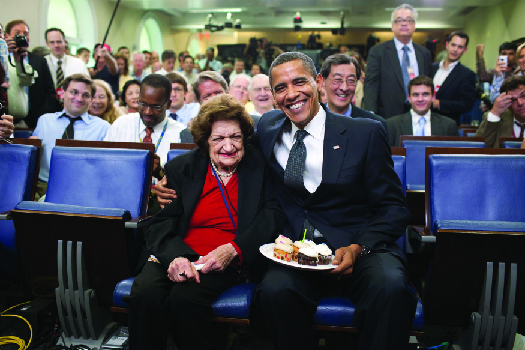| << Chapter < Page | Chapter >> Page > |
To cover war up close, more journalists are asking to travel with troops during armed conflict. In 2003, George W.
Bush ’s administration decided to allow more journalists in the field, hoping the concession would reduce friction between the military and the press. The U.S. Department of Defense placed fifty-eight journalists in a media boot camp to prepare them to be embedded with military regiments in Iraq. Although the increase in embedded journalists resulted in substantial in-depth coverage, many journalists felt their colleagues performed poorly, acting as celebrities rather than reporters.
The line between journalists’ expectation of openness and the government’s willingness to be open has continued to be a point of contention. Some administrations use the media to increase public support during times of war, as Woodrow Wilson did in World War I. Other presidents limit the media in order to limit dissent. In 1990, during the first Persian Gulf War, journalists received all publication material from the military in a prepackaged and staged manner. Access to Dover, the air force base that receives coffins of U.S. soldiers who die overseas, was closed. Journalists accused George H. W. Bush’s administration of limiting access and forcing them to produce bad pieces. The White House believed it controlled the message.
In his 2008 presidential run, Barack
Obama promised to run a transparent White House.

Because White House limitations on the press are not unusual, many journalists rely on confidential sources. In 1972, under the cloak of anonymity, the associate director of the Federal Bureau of Investigation, Mark
Felt , became a news source for Bob
Woodward and Carl
Bernstein , political reporters at the
Washington Post . Felt provided information about a number of potential stories and was Woodward’s main source for information about President Richard Nixon’s involvement in a series of illegal activities, including the break-in at Democratic Party headquarters in Washington’s Watergate office complex. The information eventually led to Nixon’s resignation and the indictment of sixty-nine people in his administration. Felt was nicknamed “
Deep Throat ,” and the journalists kept his identity secret until 2005.
The practice of granting anonymity to sources is sometimes referred to as
reporter’s privilege . Fueled by the First Amendment’s protection of the press, journalists have long offered to keep sources confidential to protect them from government prosecution. To illustrate, as part of the investigation into the outing of Valerie Plame as a CIA officer,
New York Times reporter Judith
Miller was jailed for refusing to reveal “Scooter” Libby, Vice President Dick Cheney’s chief of staff, as her confidential government source.
In 1972, however, the Supreme Court determined that journalists are not exempt from subpoenas and that courts could force testimony to name a confidential source. Journalists who conceal a source and thereby protect him or her from being properly tried for a crime may spend time in jail for contempt of court. In the case of
Branzburg v. Hayes (1972), three journalists were placed in contempt of court for refusing to divulge sources.
More recently, the Supreme Court refused to hear an appeal from
New York Times journalist James Risen, who was subpoenaed and ordered to name a confidential source who had provided details about a U.S. government mission designed to harm Iran’s nuclear arms program. Risen was finally released from the subpoena, but the battle took seven years and the government eventually collected enough other evidence to make his testimony less crucial to the case.
While freedom of the press is an important aspect of the Bill of Rights, this freedom is not absolute and may be regulated by the U.S. government. The press cannot libel or slander individuals or publish information about troop movements or undercover operatives. The Federal Communications Commission can enforce limits on television and radio programming by fining or revoking licenses. Broadcast material cannot be obscene, and indecent programs can be broadcast only between 10 p.m. and 6 a.m. Stations must also give political candidates equal time for advertising and interviews.
The media help governments maintain transparency. Sunshine laws require some governments and government agencies to make meeting documents public. Some presidents have encouraged journalists and allowed questioning while others have avoided the press. Lack of openness by government officials leads journalists to use confidential sources for important or classified information. The Supreme Court does not give the press complete freedom to keep sources confidential, though the government can choose whom it prosecutes for hiding sources.

Notification Switch
Would you like to follow the 'American government' conversation and receive update notifications?